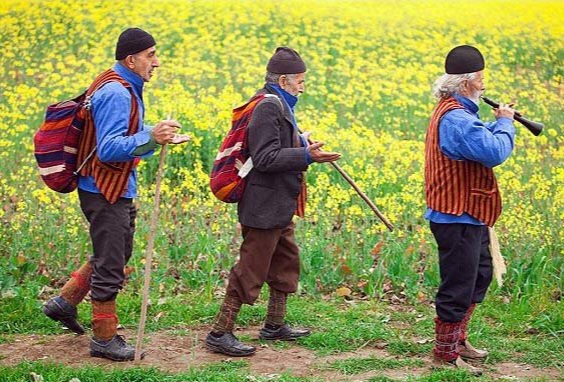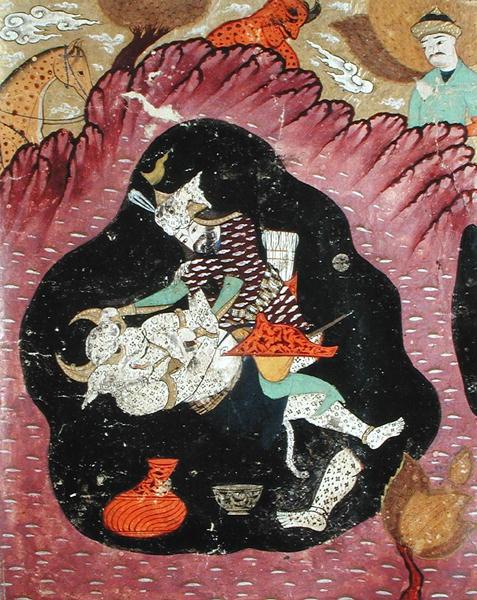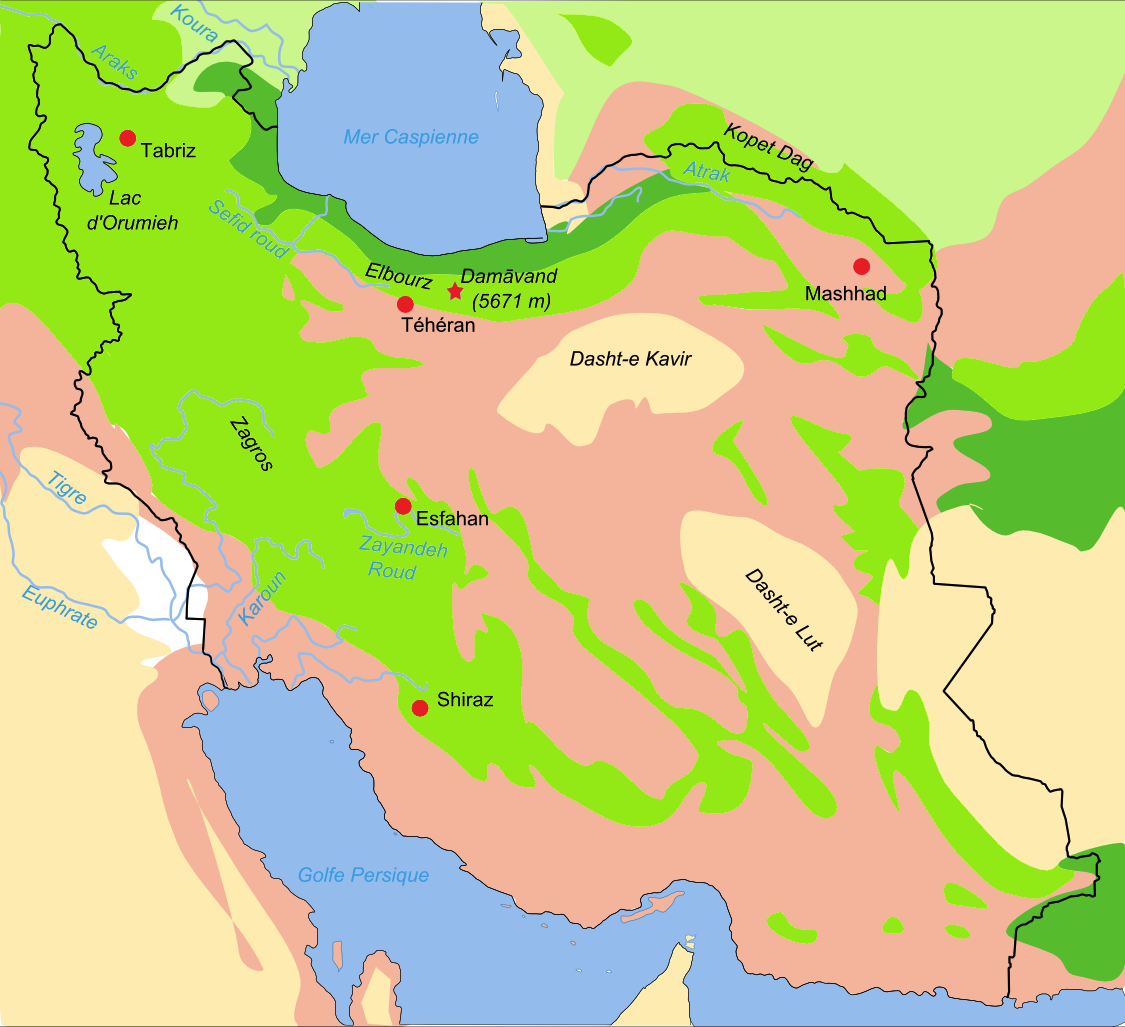|
Mazandarani Mythology
Mazandaran is a mythical land that has more epic and romantic legends and myths than any place in Iran, which is the most important land of the cultural and identity puzzle of the Iranian people due to its location between the Alborz Mountains, Hyrcanian forests and Caspian Sea. Mazanderani mythology are based on Mazanderani people's faith in mythical and semi-mythical creatures and bearers of good and evil with the development of society. These stories were transmitted orally among the local people for many centuries. A large group of these mythical creatures became a part of Mazandaran folklore as separate stories. List of Mazanderani mythical creatures Bom Sari Kija ''Bom Sari Kija'' (translation: "the girl on the roof") was a malign supernatural female, in function somewhat resembling a lulu khorkhore, who was used to frighten children into good behaviour: in the folklore of Mazandaran, it was said that children who behaved badly would be abducted by this being. Dawalpa ... [...More Info...] [...Related Items...] OR: [Wikipedia] [Google] [Baidu] |
Alborz Mountains
The Alborz ( ) range, also spelled as Alburz, Elburz or Elborz, is a mountain range in northern Iran that stretches from the border of Azerbaijan along the western and entire southern coast of the Caspian Sea and finally runs northeast and merges into the smaller Aladagh Mountains and borders in the northeast on the parallel mountain ridge Kopet Dag in the northern parts of Greater Khorasan, Khorasan. All these mountains are part of the much larger Alpide belt. The Alborz range is divided into the Western, Central, and Eastern Alborz Mountains. The Western Alborz Range (usually called the Talysh Mountains, Talysh) runs south-southeastward almost along the western coast of the Caspian Sea. The Central Alborz (the Alborz Mountains in the strictest sense) runs from west to east along the entire southern coast of the Caspian Sea, while the Eastern Alborz Range runs in a northeasterly direction, toward the northern parts of the Khorasan region, southeast of the Caspian Sea. Mount Damav ... [...More Info...] [...Related Items...] OR: [Wikipedia] [Google] [Baidu] |
Akvan Div
Akvan Div () is a mythical creature who appears in the role of Div. The subject of the story goes back to the time of Kay Khosrow. He can either disappear from view or become an onager or become a storm. In this story Akvan Div is in the onager herds with a brilliant body.Ferdowsi insists that this creature is of human origin but a malevolent one. Dirty human. The emergence of Akvan Div Akvan Div emerges after a long period of war with the Turks. Kay Khosrow King of Iran has completed the Great War with Kamus Kashani. And all of his troops are at rest. One day Shepherd Kayi Khosrow came to the Palace and complained that an onager had fled from the herd like a lion. The color of the body, like the glowing sun, a black line from its edge to its tail. It is like a big horse with four strong hands and feet. Kay Khosrow realizes he is not an onager but a demon. All the warriors were present. Then Kikhosro ordered Rustam to destroy that particular div. Akvan Divi could become wind ... [...More Info...] [...Related Items...] OR: [Wikipedia] [Google] [Baidu] |
Arash
Arash the Archer () is a heroic archer-figure of Iranian mythology. According to Iranian folklore, the boundary between Iran and Turan was set by an arrow launched by Arash, after he put his own life in the arrow's launch. The arrow was traveling for days before finally landing on the other side of the Oxus on the bark of a walnut tree hundreds of miles away from the original launch site atop a mountain. Origins of the name Although several sources (e.g. al-Biruni) appear to have considered 'Arash' to be the origin of the name 'Arshak' (i.e. Arsaces), the name of the Parthian dynasty derives from a Parthian or Eastern Iranian equivalent of 'Ardashir', i.e. 'Artaxerxes', specifically Artaxerxes II, from whom the Arsacids claimed descent. (Within the scheme of the mythologically conflated genealogies of Iranian dynasts, the Arsacids also claimed to descend—via the other Arash—from Kai Kobad.) As is typical for names from oral tradition, there are numerous variati ... [...More Info...] [...Related Items...] OR: [Wikipedia] [Google] [Baidu] |
Mazanderani Dance
Mazanderani dances, also known as Tabarian dances, are dances that are performed throughout the world by Mazandarani people, mostly on occasions such as weddings. Types of Dances * Lak Sema * Dasmal Sema * Majme Sema * Lampa Sema * Derum Bakordan (Tak Dast) * Tesh Sema * Chakka Sema * Saz Sema * Sema Hal See also * Mazandarani people * Mazandarani music Mazanderani (), also spelled Mazandarani, or Tabarian () may refer to: * Mazanderani people or Tabari people, a Caspian people in the North of Iran * Mazanderani language or Tabarian language, an Iranian language of the Northwestern branch spoken m ... References Iranian dances {{Iran-stub fa:رقصهای مازندرانی ... [...More Info...] [...Related Items...] OR: [Wikipedia] [Google] [Baidu] |
Nowruz Eve Among Mazandarani People
The Tabarian New Year, or Neowrez, occurs in the ''pintek'' days of the Tabarian Calendar. In the Mazandarani language of Iran, "pintek" means "pentad"; in the Mazanderani calendar, the year is divided into 12 thirty-day months and one pentad of days, often beginning on March 21. Neowrez Khani is one of the strongest and most popular traditions of the Mazanderani people. The last Wednesday of the old winter is known as "Kal Char Shenba". On this day, every family builds a fire in front of their house, and every member of the family jumps over it while saying ''"Burea Qa o Biyea Shadi"'', bidding sadness to go and joy to stay. Households also prepare a soup called ''Ach'' and offer it to their neighbors. As a sign of kindness to one another, the ''Ach'' dish is not washed. About fifteen days before spring arrives, groups of singers are formed, and they go from house to house. In return, it is customary for the householders to give them gifts or to offer them sweets, candies, egg ... [...More Info...] [...Related Items...] OR: [Wikipedia] [Google] [Baidu] |
Egypt
Egypt ( , ), officially the Arab Republic of Egypt, is a country spanning the Northeast Africa, northeast corner of Africa and Western Asia, southwest corner of Asia via the Sinai Peninsula. It is bordered by the Mediterranean Sea to northern coast of Egypt, the north, the Gaza Strip of Palestine and Israel to Egypt–Israel barrier, the northeast, the Red Sea to the east, Sudan to Egypt–Sudan border, the south, and Libya to Egypt–Libya border, the west; the Gulf of Aqaba in the northeast separates Egypt from Jordan and Saudi Arabia. Cairo is the capital, list of cities and towns in Egypt, largest city, and leading cultural center, while Alexandria is the second-largest city and an important hub of industry and tourism. With over 109 million inhabitants, Egypt is the List of African countries by population, third-most populous country in Africa and List of countries and dependencies by population, 15th-most populated in the world. Egypt has one of the longest histories o ... [...More Info...] [...Related Items...] OR: [Wikipedia] [Google] [Baidu] |
Levant
The Levant ( ) is the subregion that borders the Eastern Mediterranean, Eastern Mediterranean sea to the west, and forms the core of West Asia and the political term, Middle East, ''Middle East''. In its narrowest sense, which is in use today in archaeology and other cultural contexts, it is equivalent to Cyprus and a stretch of land bordering the Mediterranean Sea in Western AsiaGasiorowski, Mark (2016). ''The Government and Politics of the Middle East and North Africa''. p. 5: "... today the term ''Levantine'' can describe shared cultural products, such as Levantine cuisine or Levantine archaeology". .Steiner & Killebrew, p9: "The general limits ..., as defined here, begin at the Plain of 'Amuq in the north and extend south until the Wâdī al-Arish, along the northern coast of Sinai. ... The western coastline and the eastern deserts set the boundaries for the Levant ... The Euphrates and the area around Jebel el-Bishrī mark the eastern boundary of the northern Levant, as d ... [...More Info...] [...Related Items...] OR: [Wikipedia] [Google] [Baidu] |
Mazandaran Province
Mazandaran Province (; ) is one of the 31 provinces of Iran. Its capital is the city of Sari. Located along the southern coast of the Caspian Sea and in the adjacent Central Alborz mountain range and Hyrcanian forests, it is bordered clockwise by Russia (across the sea), Golestan, Semnan, Tehran, Alborz, Qazvin, and Gilan Provinces. Mazandaran, founded in 1937, covers an area of 23,842 km2. The province has diverse natural resources, notably large offshore reservoirs of oil and natural gas. The diverse natural habitats of the province include plains, prairies, forests and rainforest stretching from the sandy beaches of the Caspian Sea to the rugged and snowcapped Alborz sierra, including Mount Damavand, one of the highest peaks and volcanoes in Asia. Mazandaran is a major producer of farmed fish,Freshw ... [...More Info...] [...Related Items...] OR: [Wikipedia] [Google] [Baidu] |
Mazandaran (Shahnameh)
Mâzandarân (, ultimately from Middle Persian: ), is an important place known as Devil's Land whose name is mentioned 63 times in the Shahnameh, the national epic of Greater Iran. There are references to the Mazandaran of legend not only in the Shahnameh, but also in the much older Avesta. It is not clear where Mazandaran was located – various places have been suggested. Some scholars believe that Mazandaran was a region in India, others believe that Mazandaran is in the Levant or Egypt, but there is no consensus between scholars. The Mazandaran of legend was inhabited by a population that was different from other Iranians: godless magicians, they were invincible to other humans, conquerable only by the power of God. In the Shahnameh In the ''Shahnameh'', Mazandaran is the abode of great Divs (demons) - so fearful a land that no Shah of Iran dare try to conquer it. One day - so the epic relates - a Div visits Kay Kāvus in order to tempt him by reading him a p ... [...More Info...] [...Related Items...] OR: [Wikipedia] [Google] [Baidu] |
Arzhang Div
Arzhang Div ( Persian: ارژنگ دیو) is a character in Shahnameh Shahnameh of Shah Tahmasp; he is demon ( Div) chief of Mazandaran Mazandaran Province (; ) is one of the 31 provinces of Iran. Its capital is the city of Sari, Iran, Sari. Located along the southern coast of the Caspian Sea and in the adjacent Central Alborz mountain range and Hyrcanian forests, it is border ... in Rostam's Seven Labours. Eventually Rostam killed him and rescued Kay Kāvus. References Shahnameh stories Shahnameh characters Daevas Iranian folklore {{Shahnameh-stub ... [...More Info...] [...Related Items...] OR: [Wikipedia] [Google] [Baidu] |
Div-e Sepid
In the Persian epic of Shahnameh Div-e Sepid (, lit. White Div), is the chieftain of the Divs (demons) of Mazandaran. He is a huge being. He possesses great physical strength and is skilled in sorcery and necromancy. He destroys the army of Kay Kavus by conjuring a dark storm of hail, boulders, and tree trunks using his magical skills. He then captures Kay Kavus, his commanders, and paladins; blinds them, and imprisons them in a dungeon. The greatest Persian mythical hero Rostam undertakes his " Seven Labors" to free his sovereign. At the end, Rostam slays Div-e Sepid and uses his heart and blood to cure the blindness of the king and the captured Persian heroes. Rostam also takes the Div's head as a helmet and is often pictured wearing it. In the ''Shabrangnama'' In the ' it is revealed that the white demon sired a son. The ''Shabrangnama'' is a heroic epic that follows the story of Shabrang, son of the White Div, seeking revenge on the Iranians for his father's death by Rostam. ... [...More Info...] [...Related Items...] OR: [Wikipedia] [Google] [Baidu] |
Hyrcanian Forests
The Hyrcanian forests (; ) are a zone of lush lowland and montane forests covering about near the shores of the Caspian Sea in Iran and Azerbaijan. The forest is named after the ancient region of Hyrcania. The World Wide Fund for Nature refers to the ecoregion as the Caspian Hyrcanian mixed forests. Since 5 July 2019, the Hyrcanian Forests have been designated a UNESCO World Heritage Site. In September 2023, the heritage site expanded to incorporate portions of the forest located in Azerbaijan. Geography In Iran, the Hyrcanian ecoregion comprises a long strip along the southern coast of the Caspian Sea and the northern slopes of the Alborz mountains. It covers parts of five provinces, from east to west: North Khorasan, Golestan ( being its south and southwest plus eastern regions of the Gorgan plain), Mazandaran, Gilan and Ardabil. The Golestan National Park spans the boundary of Golestan and Mazandaran provinces. In the Mazandaran province, where the Hyrcanian forest is est ... [...More Info...] [...Related Items...] OR: [Wikipedia] [Google] [Baidu] |






